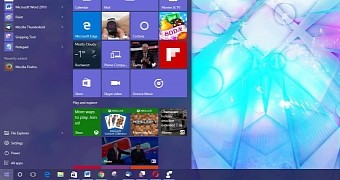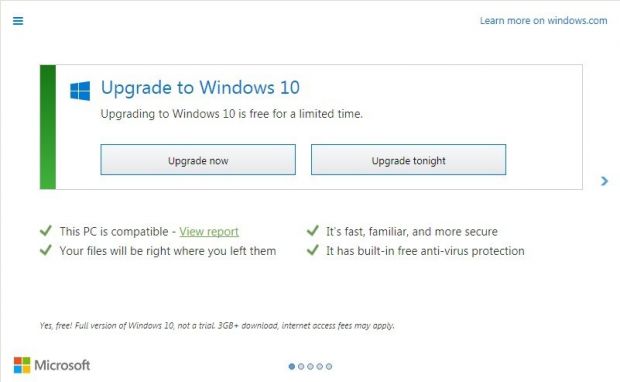Windows 10 was released on July 29, 2015, as a free upgrade for Windows 7 and 8.1 users, and in order to provide a smooth transition process, Microsoft also offered an application called “Get Windows 10” that checks a computer for any compatibility issues that might arise.
While the number of users who have decided to upgrade is not yet known (Microsoft only said in October that 110 million were running Windows 10), it’s not a secret that many turned to different ways to get rid of this application, which, in addition to compatibility scans, also displayed upgrade prompts at every boot.
Obviously, nagging users with Windows 10 upgrade notifications is not the best way to convince them to upgrade, so the result has so far been below expectations. Windows 10 has a share of approximately 9 percent, and Windows 7, which is Microsoft’s main target with these upgrade prompts, is still at 50 percent, which means that one in two PCs out there is still running it.
So to make sure that users indeed upgrade to Windows 10, Microsoft has resorted to different tactics, one more aggressive than the other and in the end supposed to bring everyone on the new OS. Fortunately, downgrading options are still available 30 days after the install, so those who want to go back can do it without losing any data.
#1 - Accidental Windows 10 upgrades
A couple of months ago, a number of Windows 7 and 8.1 PCs ended up running Windows 10 after the upgrade was automatically selected in Windows Update.
Microsoft apologized for this and said it was just an accident because this wasn’t supposed to happen, as the Windows 10 upgrade was completely optional. It did say, though, that users had to manually begin the installation process, so it wasn’t entirely its fault that some computers got the new OS all of a sudden.
The trick here: an unknown number of computers got upgraded to Windows 10 even though owners didn’t specifically want it, so maybe, just maybe, some of them decided to stick to this new OS and refused the downgrade. Microsoft obviously is the big winner because it brings more people on Windows 10.
#2 - More aggressive nags, fewer options
Recently, it has emerged that Microsoft has updated the upgrade prompts several times in an attempt to bring more people on Windows 10.
Basically, some users are now getting notifications that provide them with just two options: start the upgrade on the spot or upgrade the next night, thus giving them the chance to save their work.
There is no obvious close or reject option - users can, however, delay the install by simply clicking on the X button in the top right corner of the window or by browsing through menus. If they do this, however, the next time they boot, the same notification shows up.
#3 - Windows 10 a recommended upgrade
Starting early 2016, Windows 10 will become a recommended upgrade on computers running Windows 7 and 8.1, so the possibility of seeing more computers installing it will be significantly bigger.
Basically, the upgrade to Windows 10 will be enabled by default, but users will still be allowed to decide whether to install the new OS or not. Obviously, the number of users who start the upgrade will increase as well, and some of those who end up running Windows 10 will also decide to stay.
In the end, Microsoft's strategy could be a double-edged sword: either everyone starts using Windows 10 or more people blast the company for this aggressive push and refuse the upgrade as long as they can.

 14 DAY TRIAL //
14 DAY TRIAL // 

